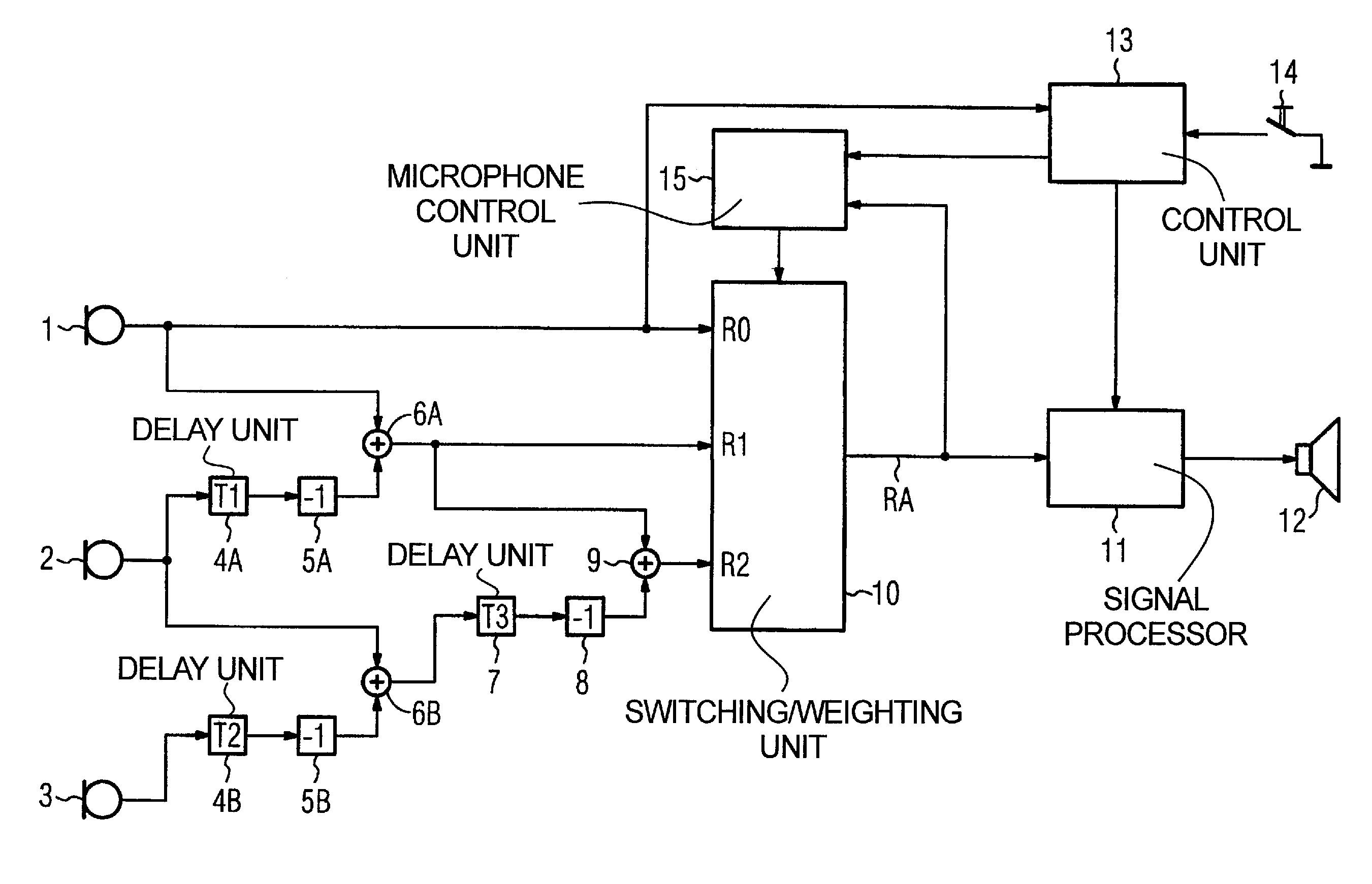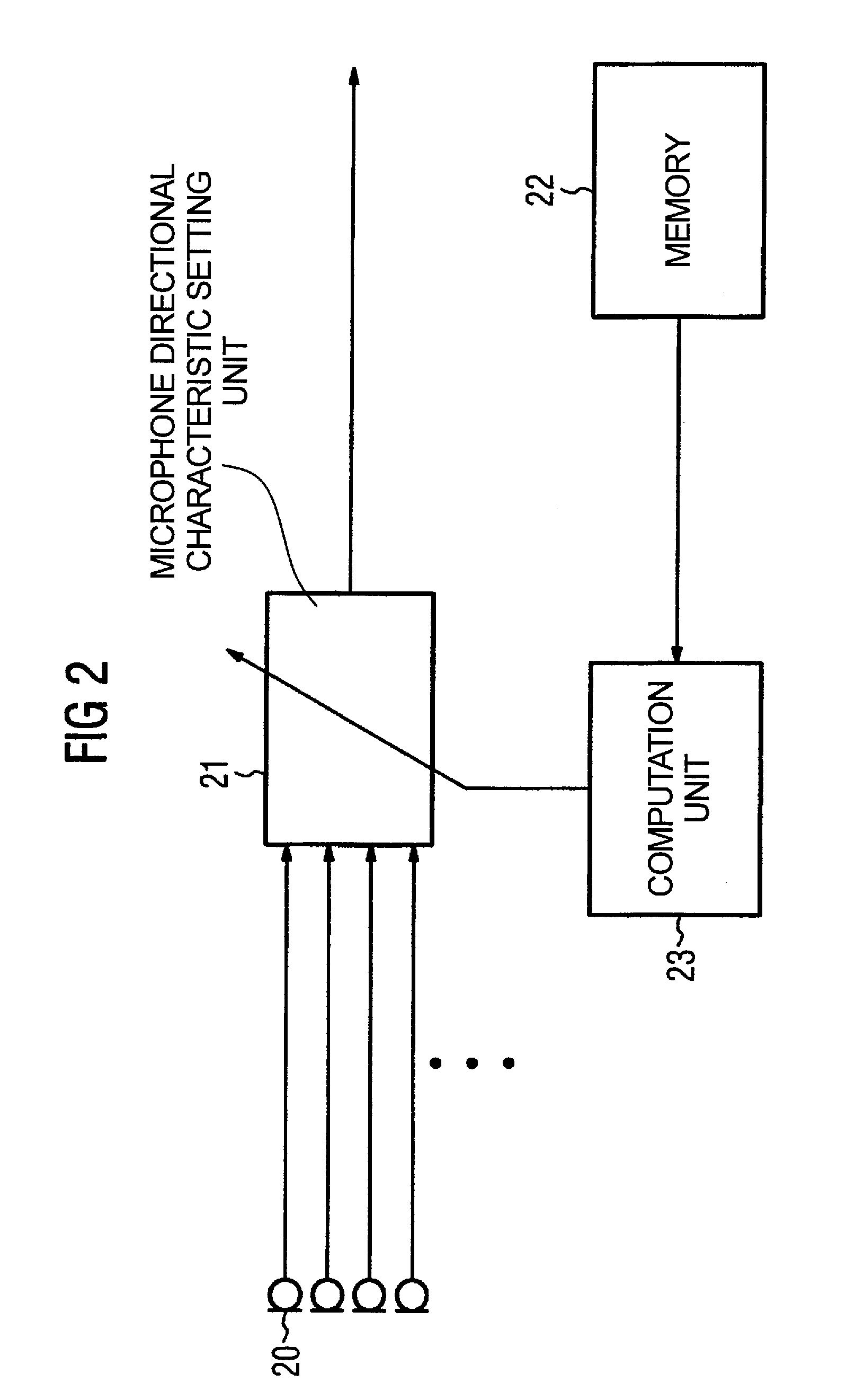Hearing aid, method, and programmer for adjusting the directional characteristic dependent on the rest hearing threshold or masking threshold
a technology of directional characteristic and hearing aid, which is applied in the direction of deaf aid adaptation, transducer casing/cabinet/support, electrical transducer, etc., can solve the problems of clear audible deterioration of sound quality, increased microphone noise, and higher microphone noise, so as to improve the sound quality of hearing aids
- Summary
- Abstract
- Description
- Claims
- Application Information
AI Technical Summary
Benefits of technology
Problems solved by technology
Method used
Image
Examples
Embodiment Construction
[0026]FIG. 1 shows a basic circuit diagram of a hearing aid having a directional microphone system according to the invention. The microphone system has three omnidirectional microphones 1, 2 and 3. The microphone signal which originates from the microphone 2 is delayed in a delay unit 4A, is inverted by an inverter 5A and is added in an adder 6A to the microphone signal R0 which originates from the microphone 1. The two omnidirectional microphones 1 and 2 thus form a directional microphone 1, 2 with a first order directional characteristic, from which the microphone signal R1 originates. In the same way, the microphone signal which originates from the microphone 3 is delayed in a delay unit 4B, is inverted by an inverter 5B and is added in an adder 6B to the microphone signal which originates from the microphone 2. The microphones 2 and 3 thus also form a directional microphone system 2, 3 with a first order directional characteristic, whose microphone signal is produced at the out...
PUM
 Login to View More
Login to View More Abstract
Description
Claims
Application Information
 Login to View More
Login to View More - R&D
- Intellectual Property
- Life Sciences
- Materials
- Tech Scout
- Unparalleled Data Quality
- Higher Quality Content
- 60% Fewer Hallucinations
Browse by: Latest US Patents, China's latest patents, Technical Efficacy Thesaurus, Application Domain, Technology Topic, Popular Technical Reports.
© 2025 PatSnap. All rights reserved.Legal|Privacy policy|Modern Slavery Act Transparency Statement|Sitemap|About US| Contact US: help@patsnap.com



